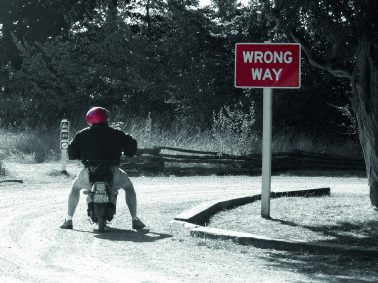Visual communication: more to it than meets the eye

Visual signs and signals are all around us. Our perception of the world is constantly being influenced by visual safety communications, such as traffic lights, road safety signs and instructional safety guidance, both in and outdoors.
Highly visual signage is also a powerful and effective way for employers to communicate with employees, customers and visitors, and it plays an integral role in maintaining a safe and well-organised workplace.
Ensuring that your workplace is up to code
Visual indicators and signals keep your employees safe, but they are also required by law under the Health and Safety (Safety Signs and Signals) Regulations 1996. This legislation requires employers in the UK to ensure that workplace premises have accurate and highly visible health and safety signage and signals.
The HSE provides practical advice and guidance for employers, and others who have responsibility for the control of worksites and premises, on how to comply with these regulations. This guidance stipulates that employers are obligated to carry out regular, comprehensive risk assessments of their premises to discover and monitor any new and emerging hazards.
While the regulations make it clear that employers have a responsibility for ensuring that safety signs are provided and maintained in circumstances where there is a significant risk to health and safety, they also state that they are not a substitute for other health and safety procedures. It is still incumbent on the employer to fully communicate risks, train staff, and take steps to mitigate the risk from the hazard in question.
Ensuring that your workplace adheres to the standards of the Safety Signs and Signals Regulations will increase the overall safety of your worksite, while also protecting yourself and your business from any future liability claims.
Enhancing organisation
A clean and organised worksite will reduce the likelihood of unnecessary objects lying around that can cause an accident. Visual signs and communication techniques can help to improve organisation and increase workplace safety.
- Directional markings – factory floors and warehouses can be busy, chaotic places, especially for newly hired staff who are not yet accustomed to the flow of work and its processes. Marking out pathways and making clear directional distinctions, through the use of floor tapes, mats, arrows and signs, can both improve the flow of the worksite and increase personal safety.
- Creating work zones – some companies find that creating distinct work zones for specific roles or tasks increases efficiency and boosts office organisation. Heavy-duty reflective floor tape can be used to mark out temporary workplace zones. This can be replaced by floor paint in the future, once the zoning parameters are ready to be made permanent.
- Labels – while proper labelling is essential to keep areas organised, it also plays an integral role in maintaining a safe and secure working environment. Depending on your business sector, labelling equipment and machinery is paramount, along with any chemicals, solvents, or acids that are used at the worksite.
- Shadow boards – these are a great way to increase organisation in every zone, including workstations, cleaning areas and even desks. Shadow boards will make your worksite look better while also ensuring that the correct tools and materials are always replaced – so no one wastes time looking for tools again.
If you are looking to boost your workplace’s visual communication strategy, consider additional solutions such as floor markings to delineate work zones, colour coded status markers to help with stock control, and on/off or stop/start equipment markers to let operators know instantly the status of a piece of machinery.
When workers view the same signs every day, they can become desensitised and may no longer pay attention to what is being communicated. It is therefore important to continually update safety signage to ensure that workers notice the signs, recognise risks, and remain vigilant for any potential health and safety hazards. Another way to avoid ‘sign blindness’ is to regularly consult with employees about how they perceive the signs, signals and overall visual communication in the workplace.
Creating a visual workplace will create a positive safety culture that will not only benefit existing employees, but will also help any new starters or visitors to understand the safety practices in place. Furthermore, using clear, compliant safety signage, bearing standardised colour coding and symbols, will also ensure workplace safety for non-English speakers.
